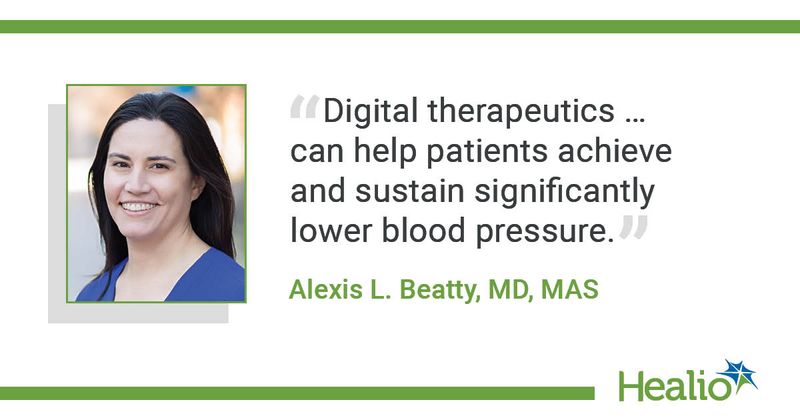Digital app helps adults achieve sustained BP reduction
Click Here to Manage Email Alerts
A hypertension self-management program using a digital app was associated with BP reductions at 1 year, according to results published in JAMA Network Open.
The researchers conducted a cohort study of 28,189 U.S. participants (median age, 51 years; 40% women) with elevated BP or hypertension who used the self-management program consisting of a BP monitor, a connected smartphone app and clinically based digital coaching (Hello Heart program, Hello Heart) via employer-sponsored coverage.

Good response
“Hello Heart has a unique design that empowers patients for blood pressure self-monitoring,” Alexis L. Beatty, MD, MAS, cardiologist and associate professor of epidemiology and biostatistics at the University of California, San Francisco, told Healio. “Hello Heart couples a blood pressure cuff with an app that has features like medication reminders and digital coaching that can help patients follow guideline recommendations for healthy behaviors to manage their blood pressure. Patients clearly responded well to a program that is entirely digital, as evidenced by the fact that participants in this study stayed with the Hello Heart program for 25 weeks, on average.”
At baseline, median systolic BP was 129.5 mm Hg and diastolic BP was 81.7 mm Hg. Participants were categorized as follows: normal (systolic BP < 120 mm Hg), elevated BP (systolic BP 120-129 mm Hg), stage 1 hypertension (systolic BP 130-139 mm Hg) and stage 2 hypertension (systolic BP 140 mm Hg).
At 1 year, median systolic BP improved at least one category in 53% of participants with elevated BP at baseline, in 69.7% of participants with stage 1 hypertension at baseline and in 85.7% of participants with stage 2 hypertension at baseline, the researchers wrote.
Among participants who stayed in the program for 3 years, those with baseline elevated BP had a mean 7.2 mm Hg reduction in systolic BP, those with baseline stage 1 hypertension had a mean 12.2 mm Hg reduction and those with stage 2 hypertension had a mean 20.9 mm Hg reduction.
Over time, greater engagement with the program correlated with lower systolic BP (high-engagement group, 131.2 mm Hg; medium-engagement group, 133.4 mm Hg; low-engagement group, 135.5 mm Hg; P < .001), according to the researchers, who noted that these findings persisted after adjusting for age, gender, depression, anxiety, diabetes, high cholesterol, smoking, area deprivation index risk and region.
Sustained BP lowering
“The most important take-home message from this study is that digital therapeutics, especially those that are evidence-based like Hello Heart, can help patients achieve and sustain significantly lower blood pressure,” Beatty told Healio. “Our research ... found that 84.4% of participants with stage 2 hypertension reduced their blood pressure and sustained it for 3 years. This is really impactful since improving blood pressure in this highest-risk group has the greatest potential for benefits like reducing risk of heart attacks or strokes, or dying from cardiovascular disease.”
Greater engagement was also associated with lower odds of very high BP, defined as greater than 180 mm Hg (estimated probability of very high BP, 1.42% in low-engagement group, 0.79% in medium-engagement group and 0.53% in high-engagement group; P < .001 for all comparisons).
Beatty attributed the success of the program to “a focus on evidence and guideline-based strategies for blood pressure self-management, and sustained engagement with the program.”
The next steps, she said, should be to “examine the effectiveness and dissemination of digital self-management interventions and their real-world effectiveness in other settings and populations, as well as dive deeper into the mechanisms that drive the impact of digital interventions on blood pressure control.”
For more information:
Alexis L. Beatty, MD, MAS, can be reached at alexis.beatty@ucsf.edu.
